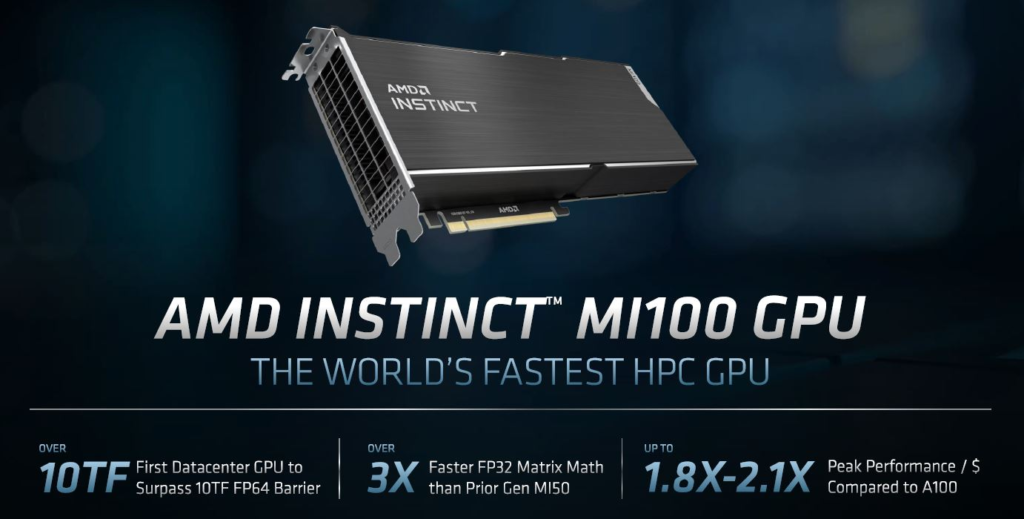A look at machine learning via the prism of AMD Instinct accelerators: The realm of intelligent algorithms
Our day has seen a significant growth in technology. The word “machine learning” now permeates every aspect of our life.
Machine learning is what enables these breakthroughs, from the personalised recommendations made to you when you sit down to view a movie to the self-driving cars that navigate our streets. However, what precisely is machine learning and how is it altering our environment?
A concise explanation of a difficult subject
Artificial intelligence (AI) is a technology that gives computers the ability to learn from experience and get better over time by being exposed to massive amounts of data without being explicitly programmed. Systems can use it to find patterns, adapt to new data, and make wise judgements or predictions.
In contrast to conventional rule based programming, which relies on explicit instructions to direct an algorithm’s activities, machine learning allows algorithms to learn from data and subsequently evolve.
The phrase “machine learning” is not brand-new; it was first used by Arthur Samuel to describe a computer employing artificial intelligence to play the game of checkers in the late 1950s.
So, if the idea of machine learning is about as ancient as NASA, why did it take so long for the public to become interested in this idea? Shortly said, the emergence of large data and the enormous gains in compute power, memory space, and bandwidth are to blame for the rise in popularity of machine learning today. But let’s look into what exactly makes machine learning feasible.
The Machine Learning Foundations
The enormous amounts of data needed for AI models to learn and advance can be processed by today’s sophisticated computers. Without these robust computers and oceans of data, AI models would probably take too long to offer pertinent information, therefore these technologies are essential to creating an effective model.
Exascale computers, like the Frontier and LUMI systems, are an excellent illustration of how an increase in computing performance can improve the performance of models.
Additionally, deep learning and the emergence of neural networks more specifically, the expansion in size of neural networks have improved the performance of machine learning workloads. This contributes further to what may be called the “perfect storm” recipe for increasing the adoption of machine learning workloads.
Data, data, and more data. Machine learning algorithms need information to learn from patterns observed in data in order to get insights from the data. There is now a lot more data accessible to “fuel” the algorithms seeking for those patterns thanks to the surge in data creation over the past ten years.
Algorithms are mathematical structures that are used to discover patterns in data. For instance, millions of photographs of a component, let’s say a connecting rod for an engine, in various stages might be supplied to an algorithm designed for visual inspection in the manufacturing sector.
Using our example, where the metal had burrs from the casting process, the computer would then discover patterns in the photos and be able to categorise that the item was defective.
The algorithm reaches these conclusions after being trained, which is the process of exposing it to copious amounts of data (in the example above, images of connecting rods) to enable it to identify those links in the data. The model is then subjected to fresh data in order to test and assess its accuracy.
The model is then refined, which is an iterative process designed to enhance the model by updating the dataset, the algorithm, or the hyperparameters.
Accelerators from AMD Instinct power machine learning
The LUMI system in healthcare is enabling researchers to use a neural network programme that can quickly and accurately mimic therapeutic efficacy and early cancer detection.
In order to provide patients with the finest personalised care as quickly as possible, pathologists are now able to assess cancer growth and model the unique responses of individual patients to different treatments.
In addition to Infrastructure as a Service (IaaS), Software as a Service (SaaS), and application programming interfaces (APIs) powered by an 11B parameter Korean large language model (LLM) for automated call centre and commercial chatbot applications, KT Cloud has ambitious plans to launch a number of new offerings.

In addition, the University of Turku trained a 13B parameter Finnish large language model (LLM) using the LUMI system, the biggest supercomputer in Europe. Hugging Face’s 176 billion-parameter BLOOM model was merged with the Finnish language during the LUMI experiment, adding 40 billion more words.
Future Directions of Machine Learning
Machine learning will continue to develop as technology does. Deep learning, reinforcement learning, and quantum computing developments have the potential to solve ever more complicated issues. Even though the future is uncertain, it will be fascinating to watch what problems that were nearly insurmountable can be overcome.


[…] would seem that AMD has placed a higher priority on the development of RDNA-specific enhancements than on efforts to […]
[…] the AI lifecycle requires adding ML to DevSecOps procedures while creating integrations and deploying AI models and apps. AI model and […]
[…] models (FMs) are ushering in a new age in machine learning (ML) and artificial intelligence (AI), accelerating the development of AI that can be tailored to a […]
[…] users are keen to understand the benefit that can be gained from using machine learning, which offers up potential to obtain more value out of data. On the other hand, the machine […]
[…] scientist today may define weights, regulate training and testing data, spot biases using the Azure Machine Learning responsible AI dashboard, and monitor the model in […]